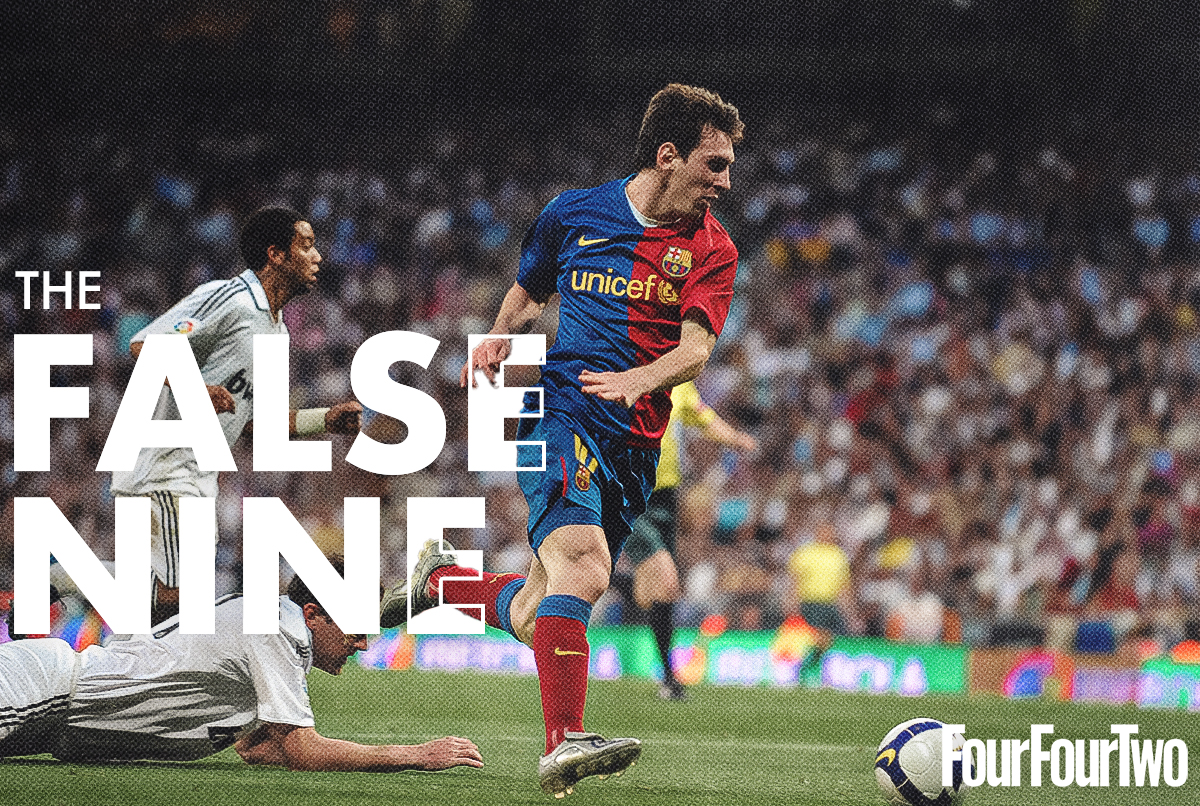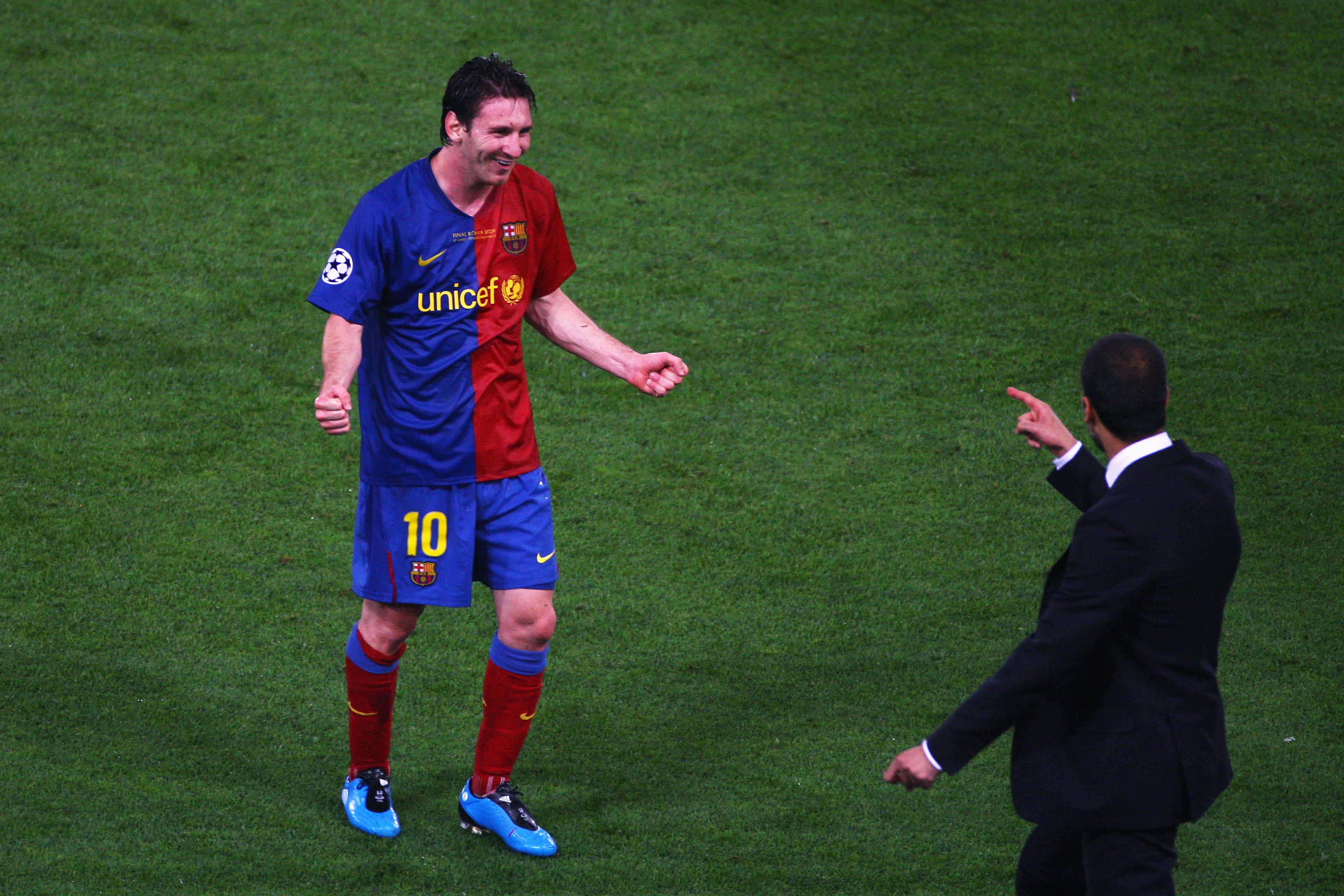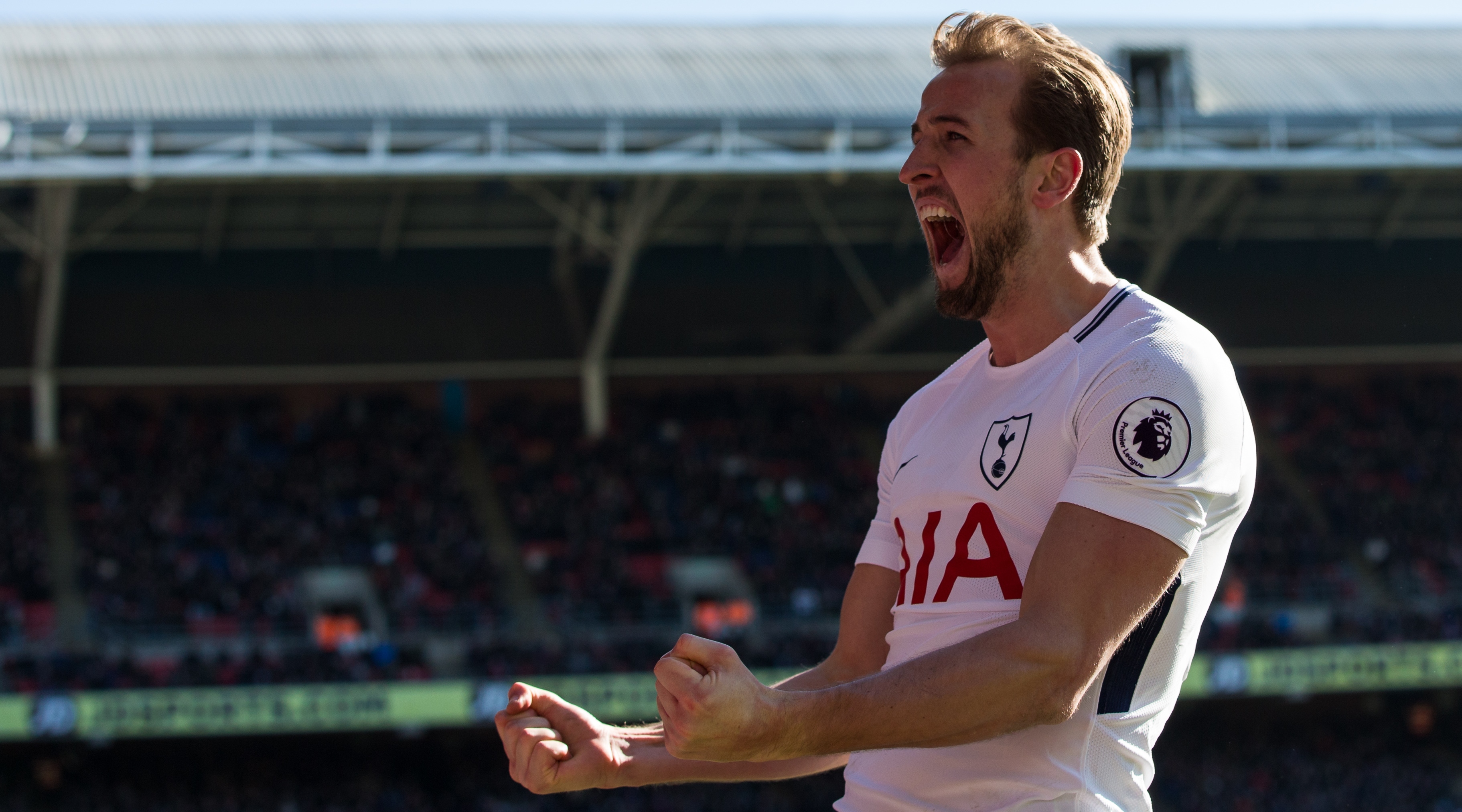
Pinpointing where the false nine originated is a tricky task. Some trace it back to as early as the 1890s, others believe the tactic was used by Hungary’s Golden Team team of the 1950s.
Most started to hear it more often after Pep Guardiola deployed Lionel Messi in the role, when the Argentine was at the peak of his powers. It is also one of the most misused football terms of the 21st century. So exactly what is a false nine and what are the benefits of fielding one?
Let's help. At FourFourTwo, we've been at the forefront of the game for over 30 years – so we've seen a thing or two from forwards dropping away from their positions up front.
What is a false nine?
If a no.9 is something of a ‘true’ centre forward, a false nine is the opposite. Rather than occupy the opposition backline in the manner of a traditional striker, the false nine will move towards the ball in deeper positions from a higher starting position.
They don’t look to run in behind the defence as much, instead wanting to drop so deep almost to become an additional midfielder. Those performing the role need to be experts at timing runs away from the defenders to receive the ball and create midfield overloads.
In the clip above, the false nine from the dark-red team drops out of the centre-forward position to link up with the midfield… creating space for the right-winger to get in behind and score.
They are deployed more with creating openings for others to run the channels, rather than scoring themselves.
The problem for the opposition centre-backs is knowing when to follow the false nine, or let them drop deep. This means the false nine can cause huge problems if they time their movement to perfection.
Playing on the half-turn is essential – it also doesn’t mean they can’t still remain a goalscoring threat. Without the ball, the false nine will still occupy the same position a traditional centre forward would. As the highest central player, they will still be required to screen passes from the centre-backs and instigate a press when necessary.
Who are the great false nines?

As mentioned, Guardiola’s use of Lionel Messi during the Catalan’s tenure at Barcelona is probably the most famous example. Ranked at no.1 in FourFourTwo's list of the greatest players of all time, Messi possessed two particular qualities that allowed him to flourish in this role.
Few players in history were better at receiving the ball on the half-turn. In addition, Messi’s expert positioning in a Barcelona team that always dominated possession, meant he was able to pick up the ball between the lines.
In general, the majority of false nines were picked to play that position because of clever movement and expert passing ability. But what made Messi different was his ability to suddenly dribble at the opposition backline with ferocious speed, whenever the situation required.

In the Premier League, two of Messi’s Argentine teammates were also intelligent enough to play the false nine to great effect. Carlos Tevez at times played the role perfectly in Manchester United’s formidable 2007-09 team.
And while he has spent the majority of his career as an advanced forward, Sergio Aguero played as a false nine in Manchester City’s title-winning 2013/14 side, often slotting in behind Edin Dzeko or Alvaro Negredo. However, Aguero was such an intelligent player he would often change roles at will, doing whatever the game demanded to help his City team. Likewise, Harry Kane has also performed a similar role for England and Tottenham, particularly when Jose Mourinho was in charge at Spurs.
While it's possible to play a front two with one or both players being ‘false’, it's not possible to play a false nine behind a more conventional striker. That role would probably be described as the trequartista: a similar role but more of a free-roaming no.10 tasked with staying close to the centre-forward. Given that most forwards either want the ball to feet or played in behind, it's essential to pair false nines and deep-lying forwards in your frontline with ‘runners’ – players who make runs behind a defence in order to stretch them. If you play too many players in your attack who all want the ball to feet, you end up with a horseshoe shape when dominating possession.
In Jurgen Klopp's gegenpressing Liverpool team, Roberto Firmino was a typical false nine on the ball – and he led a high press with Sadio Mane and Mohamed Salah, while Kai Havertz has played in a kind of hybrid squad role at Arsenal, combining the attributes of a ball-winning no.8, the aerial thread of a target man and the positional freedom of a false nine.
But the term has also been previously used in error amongst the wider football public. This can be traced back to Cesc Fabregas’ deployment as a false nine during Spain’s ultimately successful Euro 2012 campaign.
As Fabregas was predominantly a central midfielder throughout his football career, many took the term just to mean an unorthodox centre forward. Essentially, if a player was playing out of position as a forward, they could be termed as a false nine.
This is incorrect. Yet, somewhat irritatingly, the term was misused to describe anyone playing as a makeshift striker. So often when a big centre-half gets sent to play up front they are labelled as a false nine, even if they are in fact playing as a ‘true nine.’
What are the pros and cons to playing with a false nine?

Creating uncertainty in the opposition defence is undoubtedly the major plus point of this system. If a team has multiple attackers who possess intelligent movement, the false nine can wreak havoc.
But for it to be truly effective, your team has to dominate possession. This is why you’ll see Guardiola often deploy a false nine, at least before Erling Haaland came along.
If the team playing with a false nine isn’t dictating the rhythm of the game, any threat the player may cause is severely nullified. When that happens, the opposition defence can simply let the false nine drift away, without worrying about closing them down. After all, they can’t score from the halfway line.
There are defenders, too, who prefer playing against a false nine, since it's easier for some to defend the space than it is to face a physical threat – and we've all seen teams with false nines crossing into a box with no attackers there to meet the tap-in. So while the role can give your team unpredictability, you have to be clever… otherwise, it becomes rather too predictable not to have a proper presence in attack.







